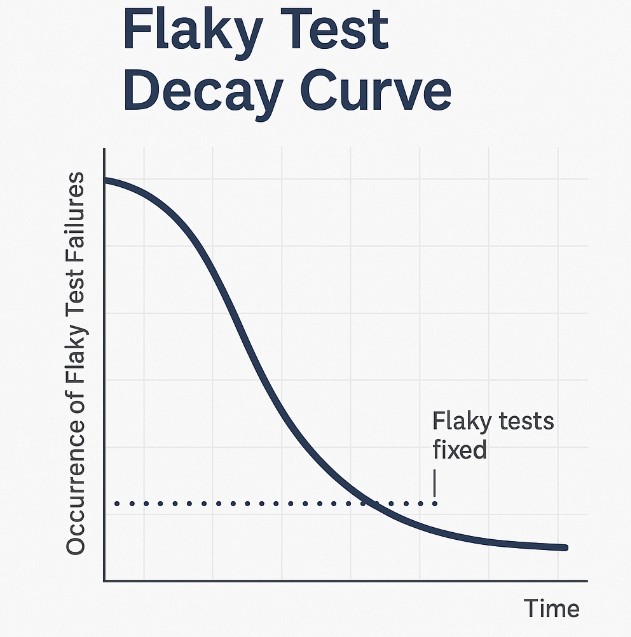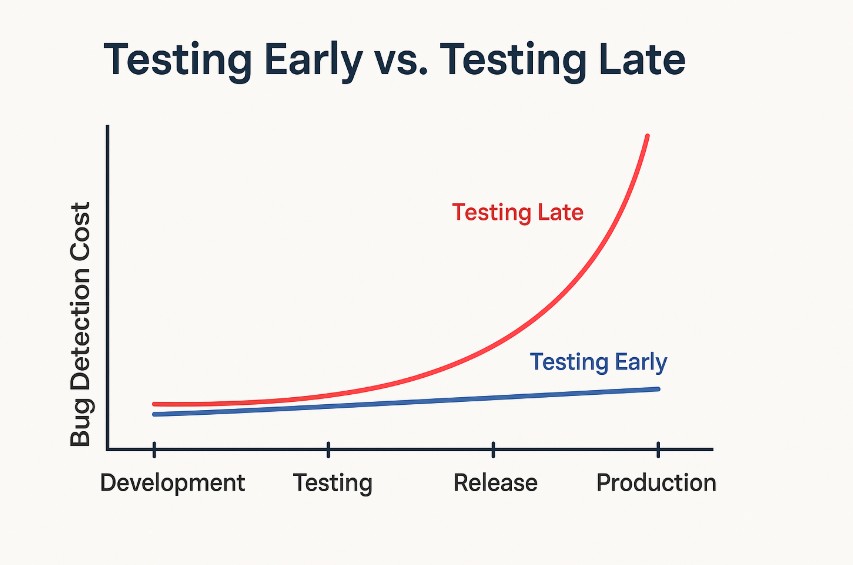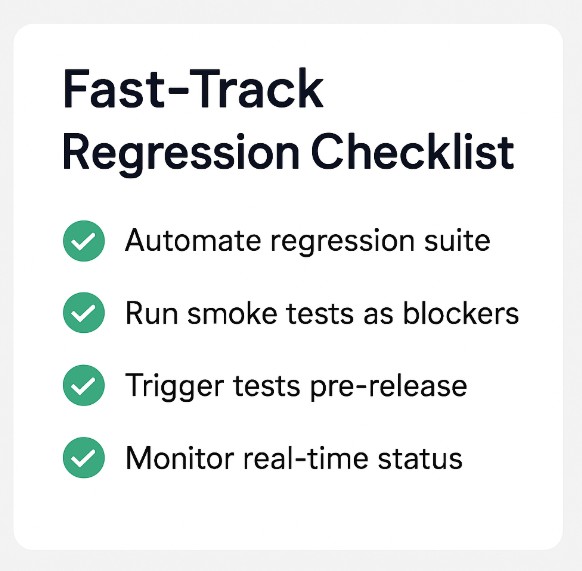7 Common Regression Testing Mistakes Dev Teams Make | DevAssure
Have you ever rerun the same regression suite just to “check the box”? Or silently ignored a failing test because “it always flakes on Mondays”?
Well, you’re not alone!
Most regression bugs don’t escape your pipeline because you lack tools. They escape because of unchecked blind spots that sneak into the process over time. And before you know it, your suite becomes bloated, noisy, and dangerously irrelevant.
“According to ThoughtWorks’ Technology Radar, teams should invest in continuous regression testing tools that can evolve with changing codebases especially in fast-moving CI/CD environments.”
Read More
In this post, we’ll break down the common regression testing mistakes dev and QA teams make — mistakes that waste hours, mask real bugs, and blow up when you least expect it.
Where Regression Testing Really Goes Wrong
Even with sophisticated test automation tools, teams still struggle with regression testing.
Why? Because it's not always the tools that fail — it's how we use them.
Want to prevent these mistakes altogether? Explore DevAssure’s automated regression testing platform and catch bugs before they reach production.
Mistake #1: Running the Same Regression Suite Every Time
Regression testing is designed to ensure that new code changes don’t break existing functionality. But many teams still fall into the trap of running the entire regression suite every single time no matter how small or isolated the code changes.
This approach leads to:
- Slower test cycles, delaying releases
- Wasted compute and QA resources
- Test fatigue, where critical failures are drowned out by a flood of irrelevant results
✅ What to Do Instead
To avoid this, teams should implement test impact analysis - a technique that dynamically identifies and runs only the test cases affected by recent code changes. This:
- Speeds up regression cycles
- Reduces infrastructure load
- Focuses attention on what really matters
Mistake #2: Ignoring Flaky Test Failures
You know the one test that “always fails on Mondays,” or the one everyone on the team just re-runs until it passes. These are flaky tests. They fail intermittently without any real issue in the code. Over time, teams begin to normalize these failures, dismissing them as noise instead of investigating the root cause. This habit is dangerous for several reasons:
- Real bugs can hide behind flaky behavior
- It erodes trust in your automated test suite
- Developers waste time rerunning tests rather than fixing problems
Worse, when flaky failures become the norm, teams might disable tests altogether leading to blind spots in your regression coverage.
✅ What to Do Instead
The right approach is to treat every flaky failure as a potential signal that something’s wrong either with your code, your data, or your test environment.
Here’s how to deal with them:
- Log flaky test occurrences over time to identify patterns
- Isolate and quarantine unstable tests until fixed
- Automate retries smartly, but flag recurring failures for review
- Run tests in consistent environments to avoid config-based flakiness
- Using reliable regression testing tools can help reduce flakiness
Worse, when flaky failures become the norm, teams might disable tests altogether leading to blind spots in your regression coverage.

Mistake #3: Relying Too Much on Manual Testing
Manual testing has its place especially for exploratory testing, UI validations, and usability checks. But when it comes to regression testing, relying heavily on manual efforts becomes a bottleneck.
In fast-paced environments where code changes frequently, manual regression testing struggles to keep up. It leads to:
- Slower release cycles
- Inconsistent test execution
- Higher risk of human error
- Tester burnout from repetitive work
Even worse, when manual testers are overwhelmed, coverage often suffers and that’s when bugs start slipping into production.
✅ What to Do Instead
Prioritize test automation for regression to reduce manual effort and increase consistency. Regression tests are ideal for automation since they verify existing functionality across releases.
Here’s how to shift smartly:
- Identify high-impact, repetitive test cases for automation
- Use tagging strategies to organize and prioritize tests
- Integrate automation into your CI/CD pipeline for faster feedback
- Choose tools that support parallel execution to speed up test runs
Platforms like DevAssure offer automated testing as a service, making it easier to scale your regression suite without scaling your team.
Mistake #4: Testing Late in the Release Cycle
It’s a classic pitfall: development finishes, the release is just days away, and only then does regression testing begin.
When regression testing is treated as an end-of-cycle activity, it creates serious risks:
- Critical bugs are discovered too late, often after deployment to staging or even production
- Pressure to “just ship it” leads to ignoring or deferring test failures
- Rollback chaos becomes more likely, affecting customer trust and dev velocity
In today’s DevOps-driven world, this approach simply doesn't work. Testing late leaves little time for fixes, reduces developer accountability, and compromises overall quality.
✅ What to Do Instead
Shift regression testing left—run it early and continuously throughout the development lifecycle. This ensures bugs are caught before they grow roots.
To do this effectively:
- Integrate regression tests into your CI/CD pipeline - Automate test runs in CI/CD environments like DevAssure supports.
- Automate critical regression checks to run after every commit or merge
- Use fast-feedback loops to alert developers in real-time
- Break down long regression suites into prioritized subsets (e.g., smoke, sanity, full)

Mistake #5: Not Updating Test Cases After Code Changes
Your code evolves, but are your tests keeping up? Many regression failures aren't caused by actual bugs but by outdated or misaligned test scripts that no longer reflect the current logic of the application. This often happens when teams:
- Add new features but forget to update test coverage
- Refactor code without updating associated validations
- Skip test maintenance due to time pressure
✅ What to Do Instead
Make test case maintenance a core part of your development process. If the code changes, your tests should evolve alongside it.
Here’s how:
Tag test cases by feature or module to identify what needs revision Use version control for test scripts, just like production code Involve developers in updating automation scripts during code changes Review and prune test cases regularly to remove outdated or redundant ones Add visual regression testing to catch UI layout shifts missed by functional tests
| Unmaintained Test Suite | Updated Test Suite |
|---|---|
| Tests fail due to obsolete logic | Tests reflect current application behavior |
| Developers ignore test results | Developers trust test feedback |
| Duplicate or redundant test cases | Clean, focused test coverage |
| Bugs slip through unnoticed | Real bugs are caught early |
| Regression cycle takes longer | Faster, leaner regression runs |
| Test suite becomes harder to scale | Easily scalable and modular test structure |
Mistake #6: Siloed QA and Dev Collaboration
In many teams, QA and development still operate as separate silos. Developers write the code, then "throw it over the wall" to testers. QA, in turn, becomes the gatekeeper rushing to validate features under tight timelines.
This fragmented workflow leads to:
- Late feedback loops, where bugs are discovered after significant rework
- Blame games, instead of shared responsibility
- Duplication of effort, misaligned priorities, and communication gaps
- Missed edge cases, since testers often lack deep context of the code changes
In a DevOps world, quality is everyone’s responsibility not just QA’s.
✅ What to Do Instead
Build a culture of shared ownership over quality by integrating QA and Dev from the start. Collaboration should happen continuously, not just at handoff points.
Here’s how to make it happen:
- Include QA in sprint planning and grooming sessions
- Use BDD (Behavior-Driven Development) so developers and testers write test scenarios together
- Encourage developers to contribute to test automation
- Leverage shared dashboards so both teams track the same test health metrics
- Adopt shift-left testing practices, including unit and API tests written by devs
Mistake #7: Skipping Regression Testing Under Time Pressure
Under delivery pressure, regression testing often gets pushed aside to save time. While it may feel like a shortcut, skipping this step can cause critical bugs to slip into production, leading to:
- Customer-facing issues and support escalations
- Rollback fire drills
- Damaged trust in the product and release team
Even if the release goes smoothly, you’ve introduced technical debt and you’re more likely to pay for it later.
✅ What to Do Instead
Build safeguards into your process so regression testing is non-negotiable even under pressure. The key is to make it fast, reliable, and automated.
Here’s how:
- Automate your regression suite to reduce execution time
- Prioritize a critical path subset (e.g., smoke/sanity tests) that always runs pre-release
- Trigger regression runs automatically on staging deployments or merge approvals
- Use dashboards to show real-time test status to stakeholders

Future-Proof Your Testing Before It Breaks You
Regression testing is about running the right tests, at the right time.
The mistakes we've explored in this blog aren’t just common, they're costly. They delay releases, introduce risk, and chip away at customer trust.
The good news? These are fixable. And the teams who fix them are the ones who win.
High-performing engineering teams don’t test more- they test smarter. They automate with intent and prioritize what matters.
🚀 See how DevAssure accelerates test automation, improves coverage, and reduces QA effort.
Ready to transform your testing process?
